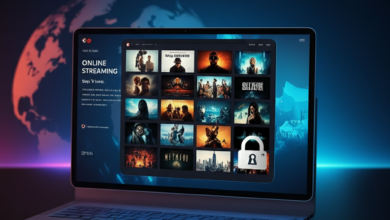Exploring Ivan and Mylène’s Relationship in “Miraculous Ladybug”

The world of Miraculous Ladybug is filled with iconic relationships that resonate with fans, but one that often tugs at our heartstrings is the dynamic between Ivan Bruel and Mylène Hapréle. This lovable pairing brings a unique mix of compassion, strength, and authenticity to the series. While their roles may not take center stage as often as Ladybug and Cat Noir, Ivan and Mylène provide critical depth to the show’s exploration of love, friendship, and teamwork.
This blog dives into the hearts of these two characters, uncovering their backgrounds, the evolution of their relationship, key moments, and their impact on Miraculous Ladybug. Whether you’re a die-hard fan or someone curious about their story, there’s plenty to unpack here.
Who Are Ivan and Mylène?
Ivan Bruel and Mylène Hapréle are classmates at Collège Françoise Dupont, part of the vibrant ensemble cast of Miraculous Ladybug. While often seen as part of the larger student group, their personalities stand out, offering contrast and emotional depth.
Ivan Bruel
Ivan is the classic representation of the “gentle giant.” With his towering frame, long dark hair, and edgy exterior, he may at first come across as intimidating. However, beneath this tough façade lies a sensitive character with a poetic soul. Ivan harbors a passion for music and expresses himself through the heavy metal band he forms with his classmates, showcasing his creative side. He addresses his emotions through lyrics, proving he’s far more than meets the eye.
Mylène Hapréle
Mylène, on the other hand, is the picture of kindness and activism. Known for her petite stature, round glasses, and shy demeanor, she is an environmental advocate with a strong passion for fighting climate change and protecting animals. While she often battles stage fright and self-doubt, her determination and compassion shine through. Mylène’s moral compass makes her a vital source of empathy and motivation for her peers, particularly Ivan.
Together, they form a pairing that beautifully balances strength and vulnerability.
How Ivan and Mylène’s Relationship Evolved
The connection between Ivan and Mylène blossomed organically over the course of Miraculous Ladybug. Their initial meeting and interactions set the stage for what would become one of the most endearing relationships in the series.
At first, Ivan’s gruff disposition seemed at odds with Mylène’s delicate nature. However, as they began to share more moments together, it became clear that these traits complemented each other perfectly. Ivan’s protective nature helped Mylène overcome her insecurities, while her kindness tempered his outward toughness.
Their bond is rooted in mutual understanding and emotional support. Both characters have had moments of self-doubt and growth, and they continually help each other shine in their own unique ways.
Key Episodes Featuring Ivan and Mylène
Several episodes in Miraculous Ladybug highlight Ivan and Mylène’s connection, showing how their relationship develops and the challenges they face. Here are a few standout moments:
“Stoneheart” (Season 1, Episode 1)
Ivan becomes the very first individual to be akumatized by Hawk Moth, turning into the villain Stoneheart after feeling rejected by the note he leaves Mylène. This episode not only introduces their budding feelings but also underscores Ivan’s vulnerability. Ladybug and Cat Noir’s intervention helps Ivan reconcile with Mylène, leading to a sweet resolution and sparking the start of their relationship.
“Horrificator” (Season 1, Episode 10)
Mylène takes center stage in this episode, battling her fears and insecurities during a class film project. Ivan becomes her anchor of support. Together, they face the akumatized Horrificator as Mylène rises above her fears, while Ivan cheers her on, showing the strength of their partnership.
“Puppeteer 2” (Season 2, Episode 7)
This episode showcases Ivan and Mylène enjoying their time as a couple playing with a childlike sense of fun and camaraderie. Their interactions here reflect the growth in their confidence, both individually and together, leaving fans charmed by their sweetness.
“Kwamibuster” (Season 3, Episode 25)
Despite being a more action-packed episode with major plot developments, it sneakily includes moments that remind viewers of Ivan and Mylène’s close bond, reinforcing their consistent presence in the backdrop of the main storyline.
These episodes collectively build their narrative arc, allowing audiences to see their relationship grow stronger over time.
Ivan and Mylène’s Impact on Miraculous Ladybug
While Ivan and Mylène aren’t front-and-center characters like Marinette and Adrien, their relationship plays a meaningful role in the series. They portray themes of acceptance, emotional growth, and kindness, encouraging other characters (and viewers!) to see the value in relationships built on empathy and support.
Their story carries significant weight when it comes to representation as well. Ivan and Mylène exemplify a relationship where opposites attract, complementing and uplifting one another through mutual understanding and respect.
Furthermore, their bond enhances the series’ overarching narrative of teamwork. The Miraculous Ladybug universe thrives on its ensemble cast, and Ivan and Mylène act as a grounding presence, showing that love and friendship are essential forces in combating not just villains, but also personal struggles.
Fan Reception of Ivan and Mylène
Fans of Miraculous Ladybug have embraced Ivan and Mylène with open arms. Many gravitate toward their realistic and relatable dynamic, seeing it as a refreshing departure from the stereotypical teenage relationships often portrayed in animation.
On fan forums, social media, and art platforms like Tumblr and DeviantArt, Ivan and Mylène frequently receive love from fans. Whether it’s fan art of their sweetest moments or discussions dissecting their deeper character traits, this couple has built a dedicated following.
Why Ivan and Mylène Matter
Ivan and Mylène may not be superheroes saving Paris from Hawk Moth’s akumatized creations, but their presence in Miraculous Ladybug is just as impactful. They show that real heroism often lies in having the strength to overcome insecurities, support others, and build genuine, lasting connections.
